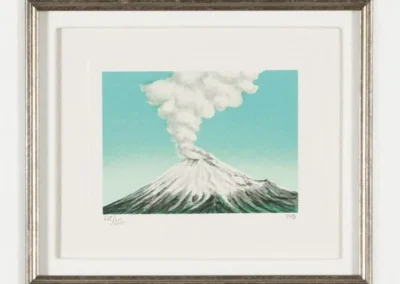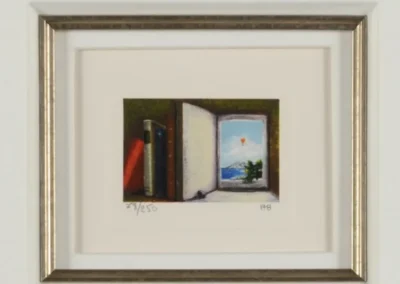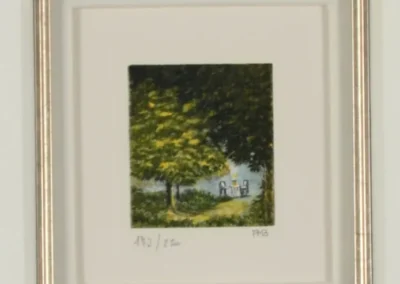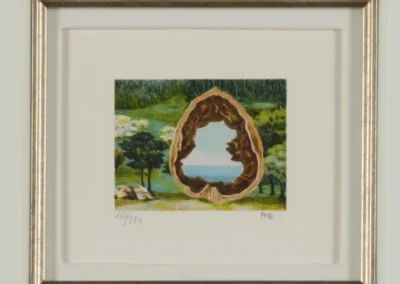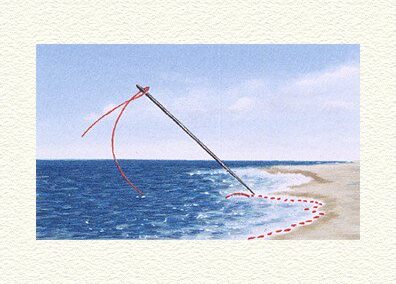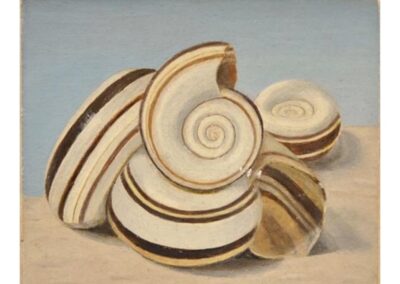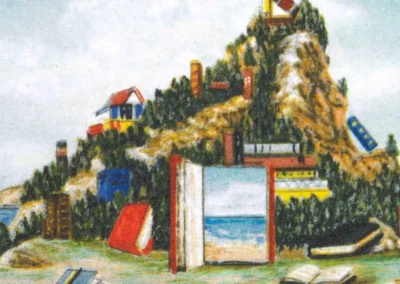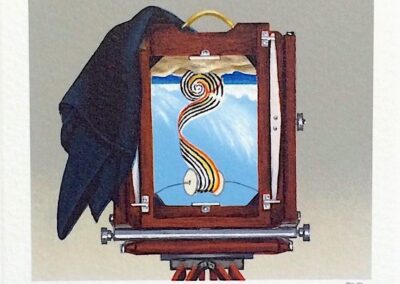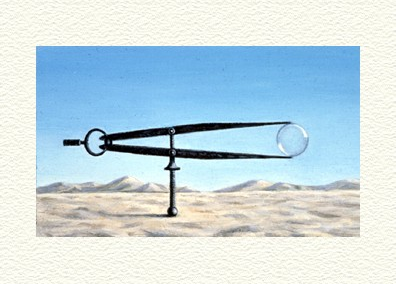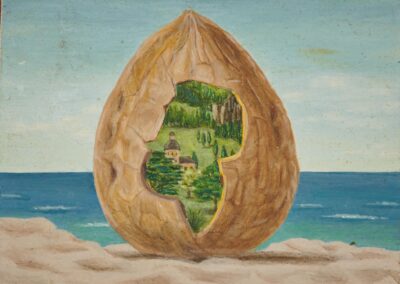Our next Artist You Need To Know is Fanny Brennan (née Fanny Myers, 1921 – 2001).
Brennan was a French-American surrealist artist (working in paint and printmaking) whose unique approach is instantly recognizable : her artworks rarely were more than a few inches square in size. “These tiny pictures are filled with humor and, in meticulous detail, present playful images of a mythical world that existed only in her imagination. As an American student in Paris, Fanny was an independent soul. “At the Atelier Art et Jeunesse [the art school she attended in Paris],” she says, “they were always trying to get me to fill the entire page of drawing paper. I only wanted to make very, very small pictures.” (from here)
She was born in Paris (her parents were well-known in the city’s expatriate art community) but had much of her early education in the United States : she would relocate to France to attend art school in 1938. Brennan was forced to flee Europe as WW II broke out.
Upon her return to the US, Brennan began an “internship of sorts” with Harper’s Bazaar magazine and would later on work at the Metropolitan Museum of Art in New York City. Brennan also showed some of her work at this time in the Wakefield Bookshop gallery in New York which was run by American artist, art dealer, and collector Betty Parsons (a precursor to the Parsons Gallery that would open years later and also show Brennan’s work, while cementing Parsons’ legacy as one of the most important early figures of the post WW II American avant-garde and an early advocate for abstract expressionism).
Brennan would be employed in the early 1940s by the Office of War Information in London in the UK. For the next two decades (while she raised her children, living alternately in the United States and in Europe) she took a break from creating art but in 1970 Brennan began to create small paintings that were labour intensive (one work would be completed in a month’s span). She began to explore lithography, which was having a revival at that time. She practiced traditional lithograthy, with colour plates she worked by hand, not machine.
Brennan’s career truly came to fruition in the early 1970s : in 1973, she had three solo exhibitions at the Betty Parsons Gallery (with the support of the previously mentioned Betty Parsons) as well as with Coe Kerr Gallery. Skyshades : Sixty Small Paintings – a book of her collected works – was published in 1990. In her lifetime she completed more than three hundred of her ‘miniature’ paintings.
Calvin Tomkins offers the following : “The paintings of Fanny Brennan carry this kind of enchantment. They measure six square inches at their largest (some are barely bigger than postage stamps), and the perfection of their making is such that each one is a miniature world, convincing in all its details. Convincing but unsettling. The imagination that gave rise to them is touched by surrealism, in particular by Magritte; it is a world where clouds escape from sacks on an empty beach and landscapes peel away at the corner to show different landscapes underneath; where gravity takes time off and the normal scale of things is askew. No sentimentality here, but a darting wit and a mind’s eye with a 20/20 fix on paradox.”
Brennan’s tiny landscapes are populated by domestic objects and this juxtaposition of seemingly incongruous elements only enhances their surreal quality. “Basically, she paints things she likes – sky, seashells, ribbons, rooms, waterfalls, boxes, lakes, mountains, seacoasts, books, pencils, pen nibs, and small household objects. In the process they become exactly what they are, and a good deal more besides.” (Tomkins, again)
Arts Writer Celia McGee has offered the following about Fanny Brennan’s delicate, enchanting scenes : “Brennan’s magic‐realist canvases [include] landscapes [that] are literally put in a nutshell, a feather duster is taken to Mount Fuji, a spool of ribbon unwinds into a road, and scale and gravity are turned on their heads…”
Further : “Small as they may be, these are real paintings. The touch is sure, and the color, which is both subtle and intense, breathes in a real pictorial space. If there is trickery here, it is not the painting but in the mind – hers and yours – and more often than not it slips over into pure magic.” (Tomkins, again, from the foreword he wrote to Skyshades: Sixty Small paintings)
Fanny Brennan passed away in New York City on July 22, 2001. More of Brennan’s work can be seen here.

